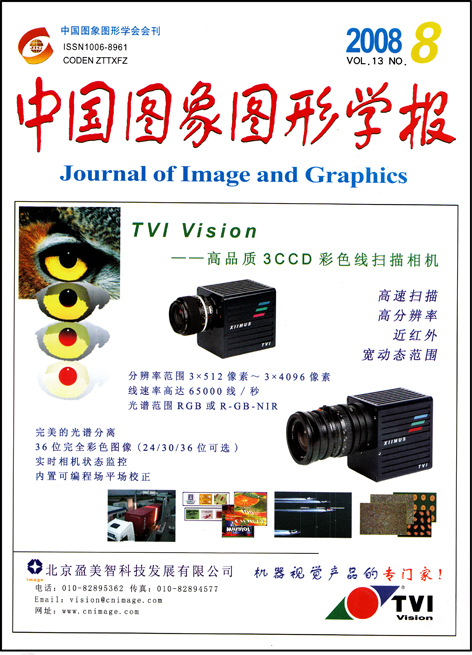
衍射增强成像相位信息提取与融合研究
胡春红1,2,3, 赵涛1,3, 李辉2, 王雪艳2, 赵新颜2, 罗述谦2(1.首都医科大学生物医学工程学院,北京 100069;2.中国科学院自动化研究所模式识别国家重点实验室,北京 100080;3.首都医科大学附属北京友谊医院肝病研究中心,北京 100050) 摘 要
众所周知,衍射增强成像(diffraction enhanced imaging, DEI)是一种功能强大的相位衬度成像技术,对于软组织来说,它能获得比基于吸收的传统X射线成像技术更高的衬度,并且能获得几乎不受散射影响的吸收像和折射像,而多图统计法(multiple image radiography, MIR)则是在统计分析的基础上,对DEI进行改进而发展起来的新方法。和DEI方法相比较,由于MIR方法更不易受噪声的影响,同时能获得额外的小角散射像,而小角散射像则能显示物体的微观结构,因此,MIR方法能同时获得吸收像、折射像和小角散射像3种图像。另外,通过对吸收像、折射像和小角散射像进行融合,还能够在一幅图像中显示物体的多种信息。利用MIR方法获得生物样品3种相位信息图像,并对3种相位信息进行融合实验的结果表明,MIR图像能够清楚地显示出生物样品的内部细节和结构。
关键词
The Study of Phase Information Extraction and Fusion Based on Diffraction Enhanced Imaging
() Abstract
Diffraction enhanced imaging (DEI) is a powerful phase sensitive technique that generates improved contrast of soft tissues compared to conventional radiography, and it can allow the visualization of nearly scatter free images displaying both absorption and refraction properties. Multiple image radiography (MIR) is a significant improvement over DEI based on a statistical analysis. MIR is more robust to noise and produces an additional image that depicts ultra small angle X ray scattering (USAXS), and the USAXS image conveys the presence of microstructure in the object. Therefore, MIR simultaneously produces three images, depicting separately the effects of absorption, refraction and ultra small angle scattering of X rays. Furthermore, the absorption, USAXS and refraction images can be fused together and several kinds of information can be integrated in one image. In this work, three MIR images of biological samples are obtained and fused together, and the results show that MIR images can clearly display the inner details and structures of biological samples.
Keywords
phase information extraction diffraction enhanced imaging medical imaging multiple image radiography image fusion
|



 中国图象图形学报 │ 京ICP备05080539号-4 │ 本系统由
中国图象图形学报 │ 京ICP备05080539号-4 │ 本系统由